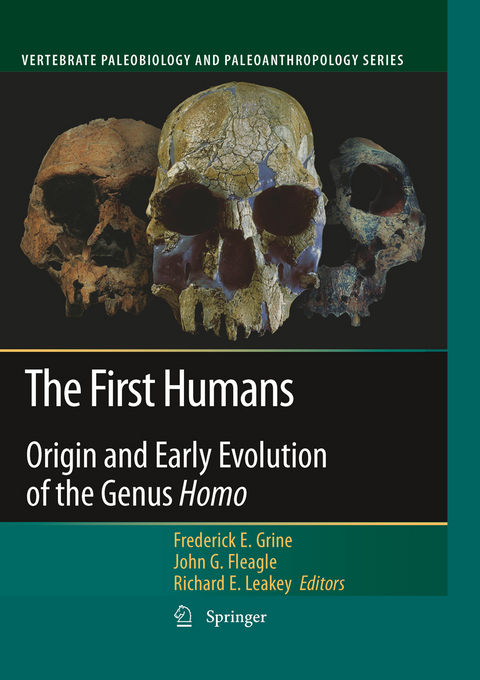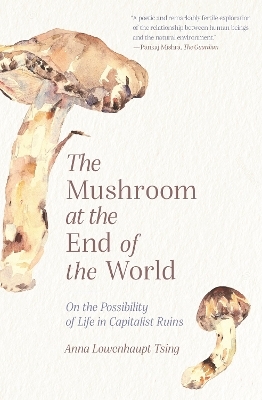
The First Humans
Springer (Verlag)
978-90-481-8233-6 (ISBN)
Frederick E. Grine Fred Grine is Professor of Anthropology and of Anatomical Sciences at Stony Brook University. He has published over 100 articles in scientific journals dealing with the subject of human evolution, and his work on the Late Pleistocene human fossil from Hofmeyr, South Africa, was named by Time Magazine as one of the top ten science stories of 2007. He edited Evolutionary History of the ‘Robust’ Australopithecines (1988, Aldine de Gruyter), and is author of Regional Human Anatomy: a Laboratory Workbook (2002, 2005, 2007, McGraw-Hill). John G. Fleagle John Fleagle is Distinguished Professor of Anatomical Sciences at Stony Brook University. He has conducted paleontological field work in many parts of the world, including Argentina, Egypt, Kenya, Ethiopia and India. He is the author of the textbook Primate Adaptation and Evolution (1988, 1999, Elsevier), co-editor of the Human Evolution Sourcebook (1993, 2006, Prentice Hall), and editor of the journal Evolutionary Anthropology. Richard E. Leakey Richard Leakey is Professor of Anthropology at Stony Brook University and former Director of the Kenya National Museums and the Kenya Wildlife Service. His field work around Lake Turkana, Kenya, has yielded a treasure trove of hominin fossils that has provided much of the paleontological record on which our understanding of human evolution is based. He has authored a number of books, including Origins, and most recently, The Sixth Extinction: Patterns of Life and The Future of Humankind. He is Chairman of the Board of the Turkana Basin Institute at Stony Brook University.
Retrospectives and Theoretical Perspectives.- Early Humans: Of Whom Do We Speak?.- Homo habilis—A Premature Discovery: Remembered by One of Its Founding Fathers, 42 Years Later.- Where Does the Genus Homo Begin, and How Would We Know?.- Craniodental Perspectives on Taxonomy and Systematics.- The Origin of Homo.- Comparisons of Early Pleistocene Skulls from East Africa and the Georgian Caucasus: Evidence Bearing on the Origin and Systematics of Genus Homo.- Phenetic Affinities of Plio-Pleistocene Homo Fossils from South Africa: Molar Cusp Proportions.- Postcranial Perspectives on Locomotion and Adaptation.- Evolution of the Hominin Shoulder: Early Homo.- Brains, Brawn, and the Evolution of Human Endurance Running Capabilities.- Interlimb Proportions in Humans and Fossil Hominins: Variability and Scaling.- Perspectives on Development, Diet and Behavior.- Growth and Development of the Nariokotome Youth, KNM-WT 15000.- Dental Evidence for Diets of Early Homo.- Origins and Adaptations of Early Homo: What Archeology Tells Us.- Environmental and Ecological Perspectives.- Plio-Pleistocene East African Pulsed Climate Variability and Its Influence on Early Human Evolution.- Tracking Ecological Change in Relation to the Emergence of Homo Near the Plio-Pleistocene Boundary.- Ecology of Plio-Pleistocene Mammals in the Omo—Turkana Basin and the Emergence of Homo.- Biogeochemical Evidence for the Environments of Early Homo in South Africa.- Summary Perspective on the Workshop.- The First Humans: A Summary Perspective on the Origin and Early Evolution of the Genus Homo.
| Erscheint lt. Verlag | 28.10.2010 |
|---|---|
| Reihe/Serie | Vertebrate Paleobiology and Paleoanthropology |
| Zusatzinfo | 15 Illustrations, color; XII, 220 p. 15 illus. in color. |
| Verlagsort | Dordrecht |
| Sprache | englisch |
| Maße | 210 x 279 mm |
| Themenwelt | Sozialwissenschaften ► Ethnologie |
| Sozialwissenschaften ► Soziologie | |
| ISBN-10 | 90-481-8233-6 / 9048182336 |
| ISBN-13 | 978-90-481-8233-6 / 9789048182336 |
| Zustand | Neuware |
| Haben Sie eine Frage zum Produkt? |
aus dem Bereich


